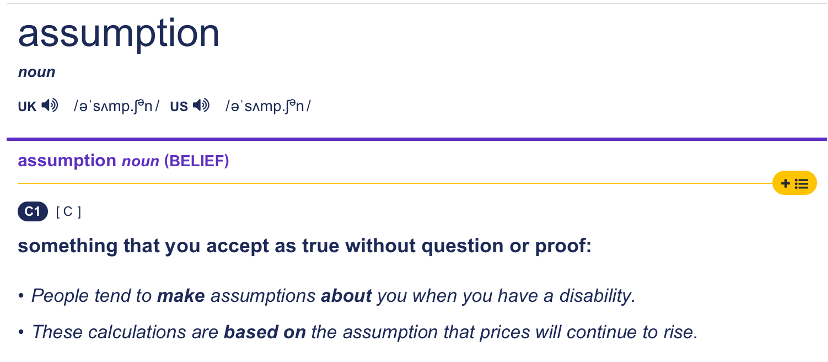Asking relevant questions in a curious and empathetic manner will both encourage the speaker and clarify what has been said. Be sure to ask sincere questions aimed at understanding others, rather than leading questions which are disguised attempts to send a message rather than receive one. (Recall Kwame Christian’s ‘compassionate curiosity’.)
(Adler, Proctor and Rosenfeld, 2014)
Can you think of an example of a leading question? Write it down in your journal.
You will have encountered Open and Closed Questions in your previous learning. (Review these if you are unsure.) Which type of question are you more likely to use during active listening?
Powerful Questions
A powerful question activates the brain. It is truly open with a genuine interest in the speaker and no “correct” answer in mind. It should be thought-provoking, stimulate reflective conversation and invite creativity. Non-powerful questions on the other hand limit the response, for instance with a yes/no answer or when the answer is already in the question.
Download or read “The Art of Powerful Questions: Catalyzing Insight, Innovation, and Action” by Eric E. Vogt, Juanita Brown, and David Isaacs here.
Consider this model from the article and summarise the take-home message.
Exercise 33
Write a set of ten questions you could use the next time you are in a conflict situation. (The first one is done for you.) Record in your journal.
- What do you feel is the best approach here?
Self-Directed Learning
Discuss the value of questioning skills to resolve conflict.
- What gets in the way of our willingness to ask questions when we are involved in conflict situations?
- Do we usually take the time to ask questions when we’re in conflict with another? Why or why not?
- How might asking questions change the course of the conflict?
Checkpoint
Assessment 3.1, Task 1
A listening response is the way we respond to the communication we receive. We have already looked at two useful responses - paraphrasing and questioning. There are several other ways to respond, with some responses more appropriate than others in a given situation:
- Advising… “Well, I’ll tell you what I’d do…”
- Paraphrasing…
- Questioning…
- Prompting…
- Reflecting…
- Analysing…
- Supporting…
- Judging…
Exercise 34
- For each of the styles above, write a separate response. The first one has been done for you.
- Discuss the pros and cons of using each response style with a partner.
- Read the following scenario and construct a response that represents each of the listening styles.
- Scenario: You notice your co-worker slipping some salmon fillets from the work chiller into her bag at the end of a busy shift. She says, “The salmon’s probably going to be thrown out anyway, and besides, I worked really hard tonight and didn’t even get a proper break - the business owes me.”
- Scenario: You notice your co-worker slipping some salmon fillets from the work chiller into her bag at the end of a busy shift. She says, “The salmon’s probably going to be thrown out anyway, and besides, I worked really hard tonight and didn’t even get a proper break - the business owes me.”
Self-Directed Learning
You may also have encountered these listening responses:
- Diagnosing… “Your problem is that you…”
- Discounting… “Cheer up, it’ll work out…”
- Lecturing… “How many times do I have to tell you…”
- Threatening… “This is the last time I will…”
- Preaching… “You ought to know better than to…”
(Hedstrom, n.d.)
- Which response do you consider would cause the most harm to your relationship with the person speaking? Why?
- Which response do you think is the best? Why?
- Do you recognise your own listening style(s) from the examples included here?
- Does your listening style change in various situations, or do you use the same style most or all of the time? Explain.
- What are the consequences (beneficial and harmful) of the listening styles you use?
When you are in conflict, the use of an “I” statement” can help you state your concerns, feelings, and needs without escalating the conflict. The focus is on your own feelings and experiences, not what the other person has done or failed to do.
By expressing your experience in a way that does not attack, criticise, or blame others, you are less likely to provoke defensiveness and hostility and the other person is less likely to shut down or tune you out. An “I” Message won’t fix the problem – it is only intended to stimulate constructive dialogue about the true sources of conflict.
Compare the following statements:
- “It’s rude of you to be late all the time.”
- “I feel frustrated when you don’t show up to work on time.”
The first statement has a blaming and accusing tone which puts the receiver on the defensive, whereas in the second statement, the speaker is explaining how things look from his/her perspective. (Montemurro, 2011)
The "I" Formula
- I FEEL… state your feeling
- WHEN… describe the behaviour
- BECAUSE… personal impact/why you feel this way
- I’D PREFER… offer a compromise or solution/ what you prefer to see instead
- FEEDBACK… am I being clear? How do you view the situation?
Exercise 35
- Translate the following into an “I” statement.
“You never listen to anyone, and you’re actually not listening to me now!” - Practice writing an “I” Statement in response to the following workplace situation, using the “I” Formula as your guide.
- Scenario: You have been asked to change your shift at work. This is the third time in two weeks. You feel that this is unfair and you are finding it difficult to change your shift as you have a family to look after. You would find it helpful if you had a few days’ notice of the change in shift. You decide to talk to your boss about it.
Self-Directed Learning
Find the Doonesbury cartoon entitled Street Calculus by Gary Trudeau at this link.
- What is happening in this image?
- What do you notice about what each person is thinking in his/her thought bubble?
- How are each of their thoughts similar? How are they different?
- Do you think the situation depicted here is realistic? Do people use similar “lists” to make judgments about each other?
- How aware do you think people are of the lists they make? When someone sees you walking down the street, what lists might they make about you? What lists do you sometimes make about others?
Post a comment about the cartoon on the class discussion board.
Exercise 36
- Write a brief paragraph describing each of the people below – describing their character, socioeconomic status, education level, etc.
-
- Discuss how you came up with your descriptions of each person in the photos. Have you made any assumptions in your descriptions according to this definition?
(Cambridge Dictionary, n.d.)
(Adams, 2018)
-

- “We make assumptions because they are an efficient way to process the world. One way our brain saves energy is by making assumptions. We draw on our past experiences to find patterns in how the world works. When we encounter new situations, we apply these patterns—or assumptions—to the new environment. This process saves us the energy of analysing each situation completely anew.”
- Our brains interpret and evaluate sensory stimuli so quickly we often don’t realise we’re making assumptions. You may be surprised to learn that over 50 percent of the time our assumptions and judgments about another individual are wrong!
-
- If you are wrong, how does that impact the individual, the work team, and the overall business in terms of productivity, creativity, morale, customer service and competitiveness?
Our judgements become the filters through which we listen.
Self-Directed Learning
“The impulse to judge other people is a complex one, and often has as much to do with how we feel about ourselves, as it does with how we feel about the subject of our judgement. There is more than one reason that we may feel this instinct.”.
(Chau, 2018)
Record your answers to the following questions in your journals.
- Discuss some of these instincts we might experience that result in us judging others.
- Can you recall an instance where you passed judgement on someone as the result of your own insecurities (fear, ignorance, envy etc.)? Did you resolve the situation?
- What are some ways in which inaccurate assumptions lead to conflict?
- What steps can we take to prevent this from occurring?
Values are the set of beliefs that influence how we live our lives. They inform us what is good, bad, right, wrong, just, and unjust. An attachment to our personal values and beliefs is one of the key barriers to effective listening, preventing us from receiving or understanding the message we are hearing. The same incident may be perceived in dramatically different ways – depending on the values and beliefs of the receiver.
Exercise 37
Create a list of values that most accurately describe your feelings or behaviours. (You will find numerous examples online, including quizzes.)
- Identify six people you admire. What qualities draw you to these people? Do these same values appear on your list?
- Recall some of the best and most painful moments in your life. What do these experiences reveal about your core values?
- Describe a decision you have made in your life and explain how this decision relates to your personal values.
- Select two or three particularly important values from your initial list and describe how they manifest themselves in your daily life?
- Where and when does a person’s individual values develop?
- List five reasons why it is important to identify your core values.
Understanding Workplace Values
Workplace values are one of the most important factors in team dynamics. Values can create conflict and confrontation at work when:
- An employee’s values don’t align with the job itself or the values of the company.
- Two team members with contrasting belief systems are working alongside each other.
We may sometimes feel uncomfortable about another person’s values, but it is good to remember that same person may feel uncomfortable about our values.
Think of an occasion where a clash of values led to workplace conflict. How was the situation resolved? Could it have been handled differently?
- Why would someone make a decision that goes against his or her values? What problems could this cause?
- What are some reasons we don’t take the time to make sure we understand each other’s perspectives? How does this impact the team?
- How does it benefit us as individuals and the team overall to respect everyone’s perspective?
- What can we do to make sure everyone’s perspective is understood?
- Do we all have the same perspective of the situation?
Summarise as a journal entry.

